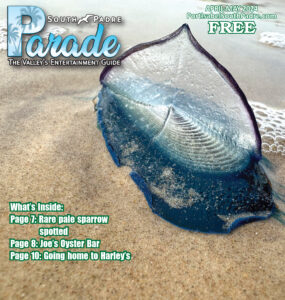By DINA ARÉVALO
Port Isabel-South Padre Press
editor@portisabelsouthpadre.com
Representatives from Cameron and Willacy Counties, the Texas shrimpers industry, the cities of South Padre Island and Port Isabel, and others were on hand during a listening session hosted by Texas Commission on Environmental Quality (TCEQ) Commissioner Toby Baker Monday night at the UTRGV Brownsville campus.
The session was one of several Baker organized across the coast to discuss suggestions for the distribution of funds by the RESTORE Council, which was created by the RESTORE Act to administer funds from penalties levied on British Petroleum (BP) in the wake of the Deepwater Horizon oil spill in 2010. The Council is an independent federal agency composed of six federal agencies, as well as the governors from the five gulf states, or their designee. Baker was appointed to be the designee for Texas by former Governor Rick Perry.
Earlier this year, the Council released a Funded Priorities List (FPL) selecting several large scale restoration projects to receive some $139.6 million in funds. The Rio Grande Valley’s own Laguna Atascosa National Wildlife Refuge was named in the FPL and is slated to receive $4.3 million for land acquisition.
However, monies will also be available to fund projects approved by the state — projects the public will help decide. As such, the Council, through Baker, sought to receive public input, as well as to educate interested parties about the project proposal process during Monday night’s listening session. “We’re at a point now where we’re building the process to actually get money related to the spill out the door,” Baker said. “And what we’re trying to get the public to help us with is, ‘Do we have the process right? Help us build the process to score the projects in the correct way to get the money out the door in the way the public wants, that complies with the RESTORE Act’,” he said.
“What we’re focused on is $56 million, and the goal would be, we would open up the application process early next year for that $56 million,” he said, adding that the funds can be used for environmental as well as economic development and restoration.
TCEQ has outlined several priorities for project proposals, requiring that they meet certain criteria. Among them are beneficial impacts to the environment and the economy, including job creation, gulf seafood marketing, habitat conservation and preservation and more. TCEQ will also be evaluating how well project proposals complement other projects, whether they exist as part of a larger plan, project readiness, and how much public support they have.
The gulf seafood marketing criterion piqued the interest of Andrea Hance, president of the Texas Shrimp Association, who spoke of the difficulties local shrimpers have competing with the low prices of farm raised shrimp imported from Asia. This season Texas shrimpers are seeing their catches sell for $2.75 per pound, compared to $6.50 per pound in 2014. “We’re once again saturated with imports,” Hance said.
Speaking after the presentation, Hance said she hoped to be able to use RESTORE funds to educate consumers about wild caught Texas shrimp. Already, education efforts have spurred consumers to ask for local shrimp, but that isn’t enough, according to Hance. “Eight out of 10 restaurants that state they’re serving gulf shrimp … are not,” she said. She hopes that can be changed via increased transparency and accountability via new regulations.
“When it comes down to it, people want to eat gulf shrimp,” she said.
Cameron County Parks Director Joe E. Vega spoke with optimism of putting funds to use on what Baker called ‘shovel ready’ projects. “We’re excited about the RESTORE Act dollars,” Vega said Wednesday.
The County has already been working on several projects that could possibly qualify for RESTORE funding, including shoreline restoration at Adolph Thomae Jr. Park, the Bahia Grande restoration project and related plans to expand the pilot channel that feeds it, and improvements to Beach Access #4 on South Padre Island.
“We’re looking at economic development opportunities, we’re also looking at wetland restoration projects. We’re also looking at enhancing public access and possibly acquisition for future public access,” Vega said.
TCEQ will continue accepting public comments on the listening sessions until Oct. 9. Comments can be submitted online at http://www.restorethetexascoast.org/. The website also contains more information on the priorities criteria for project proposals, as well as other resources on the RESTORE Act’s implementation in Texas.
Want the whole story? Pick up a copy of the Port Isabel-South Padre Press, or subscribe to our E-Edition by clicking here.




Comments